52 Things You Need to Know About Viruses
Updated: Mar. 16, 2022
They're all around us, they're not really alive or dead—more zombie-like—and that's just for starters...
Our editors and experts handpick every product we feature. We may earn a commission from your purchases.
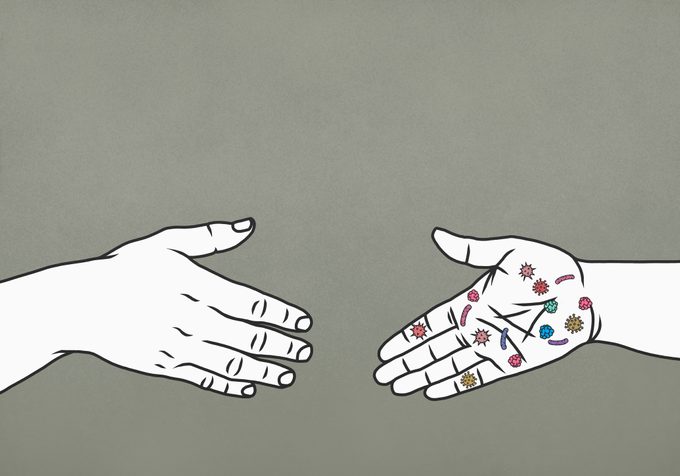
Everything you’re afraid to know about viruses
Viruses are some of the most basic organisms on the planet, just a strand of genetic material with a protein covering, says Diane Havlir, MD, chief of the Division of HIV and Infectious Diseases at the University of California-San Francisco. There’s a long-standing argument in scientific circles over how to classify them. They’re not inanimate because they multiply, have genes, and evolve. Yet technically they’re not “alive” as they don’t have cells, can’t convert food into energy, and can’t survive on their own. They’re basically biological zombies; viruses aren’t alive—but they’re not dead either. And like zombies, they have exactly one mission: to find a host and use it to replicate, making more viruses. They can reproduce only by hijacking the host cells, eventually causing them to burst and die. Because of this, viruses that infect humans nearly always cause illness.
Intrigued or grossed out? We gathered 52 important, funny, and even downright bizarre things you need to know about these germs:
It’s raining viruses
The next time you dance in the rain or catch snowflakes on your tongue you might want to consider the fact that it’s literally raining viruses. Viruses and other microorganisms are so tiny that they get swept up into the atmosphere in small particles from soil-dust and sea spray, returning to the Earth via rain, snow, and sandstorms, often ending up in totally new locations, according to a study published in Nature.
There are way more viruses than you think
Often we just think of a few viruses—influenza, HIV, and now coronaviruses—but viruses are the most plentiful microbes on the planet. In fact, there are so many viruses that if you combined all of Earth’s viruses, they would cover an area spanning 100 million light-years, according to a study in Nature Reviews Microbiology. Of those, about 320,000 types of viruses infect mammals but there are just 219 known to infect humans, according to the U.S. National Library of Medicine.
Figuring out how contagious they are is an art and a science
This is one thing that’s definitely a lot easier in the movies; figuring on how, why, and how fast a virus is spreading is based on many factors that can change quickly. One way to measure viral spread is the R0 (pronounced “r naught”) which is the average of how many other people someone who has the virus will infect, Dr. Havlir says. The higher the number, the more rapidly it’s spreading. So if the R0 is 4, then each infected person will spread the disease to about four others. But this number can change over time, based on preventive and public health measures like social distancing, she explains. The ideal R0 is less than one, which means the virus is dying out in a population rather than spreading.
The difference between viruses and bacteria
Bacteria and viruses are both microbes that can make you sick and often have similar symptoms so it’s easy to confuse them, but they’re not the same thing, says Dr. Havlir. Bacteria are single-celled organisms that can live and reproduce on their own. There are thousands of types of bacteria and most are harmless or even beneficial to humans; less than one percent cause disease. You can kill bacteria with antibiotic medication. It’s often difficult to tell based on symptoms whether an illness is caused by a virus or bacteria but lab tests can confirm the difference. It’s possible to get bacterial and viral infections at the same time, she adds.
Viruses can survive for days on your TV remote
Think of all the things in your home you touch frequently. Phones, railings, remotes, faucets—they’re all breeding grounds for disease. Viruses are tenacious and can survive for quite a long time on surfaces outside the human body. Exactly how long they can remain infectious depends on the type of surface and the environmental conditions; in a lab environment, the Covid-19 virus remained active on plastic and metal surfaces for two to three days and 24 hours on cardboard and paper, according to a study published in The New England Journal of Medicine.
You can be contagious without ever showing symptoms
Some viruses, including those that cause herpes, HIV/AIDS, and Covid-19, can be spread via asymptomatic people (they’ve never had symptoms) and presymptomatic people (they don’t have symptoms yet), according to the Centers for Disease Control. Some people may even be “superspreaders,” infecting dozens to hundreds of other people without even realizing it. This means that you need to take precautions to prevent spreading viruses even if you don’t personally feel sick, they say.
You can get sued for knowingly spreading some viruses
While it’s unlikely anyone will sue you for spreading the flu around the office (but, please, stay home when you feel ill), they may be able to take you to court for knowingly giving them an incurable virus, like HIV or herpes. For instance, the singer Usher has been sued by sexual partners for not disclosing his herpes status and putting them at risk of getting an STD. Similarly, actor Charlie Sheen has been sued twice for exposing women to HIV without telling them. This is just one of many reasons it’s important to discuss your health history with prospective romantic partners.
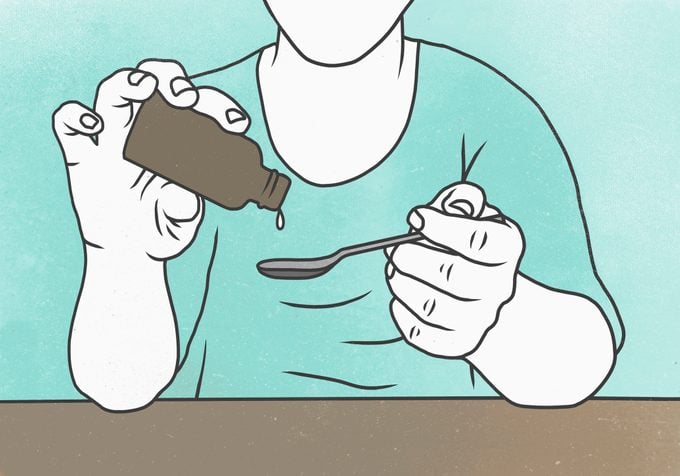
Cold and flu
The viruses that cause the common cold and seasonal influenza are some of the most common viruses on the planet but there’s still a lot scientists are still learning about them.
If you’re obese, you’re contagious longer
If you’re obese, you’re contagious with the flu virus 42 percent longer compared with those who aren’t obese, according to research in The Journal of Infectious Diseases. The theory is that because obesity is linked to many health problems it may impact your immune system, making you contagious for longer. Extra weight may make the flu shot less effective, too.
The flu can trigger heart attacks
The influenza virus doesn’t just irritate your chest and sinuses—it also causes widespread inflammation throughout your body. And that inflammation can increase the risk of developing blood clots that can trigger a heart attack, according to a study in The New England Journal of Medicine.
The flu is more than just a head cold
In addition to all the usual flu symptoms (fever, headache, cough, body aches), the virus can also lead to pneumonia, sinus infections, and ear infections. Some people are more vulnerable to complications, including seniors, pregnant women, kids under five years of age, and people with chronic health conditions like asthma or diabetes.
Flu season depends on where the virus goes
The flu virus moves around the world. “Research reveals that cross-hemisphere migration frequently occurs and it can occur in both directions,” explains Kola Dushaj, MD, an internal medicine doctor at CareMount Medical in Cortlandt Manor, New York. “The flu season can begin as early as October in the United States and ends in March, with a peak in February.” However, cases of flu can still occur as late as May, according to the Centers for Disease Control and Prevention. “In the Southern Hemisphere, where winter coincides with our summer months, the flu season can run from June to September,” says Dr. Dushaj.
Cold air can make it easier to get sick
This might be one health myth that is true, sort of. “Going out into the cold won’t make you sick on its own,” says Saralyn Mark, MD, president and CEO of SolaMed Solutions, in Washington, D.C. “But if you are in the cold often, you increase the chance you could get infected,” she says. Here’s how that works: “Physiologically, your body adapts to the cold by allowing your mucous membranes to dry up. That mucus is a great defense mechanism. It gets stuff out of your body that you don’t want in it. When it dries up, you don’t have the protection, and a virus can get in,” she explains.
Nail-biting is a great way to get viruses
One of the best things you can do to avoid viruses is to wash your hands frequently with soap and water (or use an alcohol-based hand sanitizer) and keep them away from your face, especially your mouth and nose, says Purvi Parikh, MD, adult and pediatric immunologist and an allergist at NYU Langone Health in New York City. Another often-overlooked factor is nail-biting. This nervous habit gives viruses and other gross germs a one-way ticket straight into your body, she says. “Keep your nails short and chew gum so you are not tempted,” she says.
A Netflix binge can make your recovery slower
There’s nothing like a good movie and a soft blanket when you’re sick and miserable. But do your TV watching during the day so that you can toddle off to bed early. A study published in 2019 in the Journal of Experimental Medicine found that a good night’s sleep can boost the effectiveness of certain specialized immune cells called T cells. “Your immune system needs time to mount a defense,” Ian Tong, MD, the East Palo Alto, California-based chief medical officer of Doctor on Demand. “Rest and proper sleep will strengthen your immune system. Sleep as much as possible to give your body a chance to recover.”
Cold showers aren’t a fever cure
You may have been told by a parent or grandparent that an ice bath or cold shower is a good way to quickly lower a fever but cold water can cause shock and may end up spiking your temperature higher, says Patricia Whitley-Williams, MD, professor and chair of the department of pediatrics at Rutgers Robert Wood Johnson Medical School in New Brunswick, New Jersey. Lukewarm water is best for helping to break fevers, she says. This is just one of the things you shouldn’t do to treat the flu.
Secondhand smoke increases your risk of getting sick
This one may seem obvious since you already know that tobacco smoke—whether you’re the one smoking or not—damages your lungs. But that goes double when you’re sick since cigarette smoke weakens immunity against infections, as research, including a study published in Oncotarget, has shown. Not only are you more likely to catch a virus but it can make the illness worse as secondhand smoke irritates the lungs and can make congestion and coughing worse.
Your bed is your best friend and worst enemy
Staying in bed is an essential part of fighting off cold and flu viruses but all that time in bed means your pillowcases and sheets are contaminated. Viruses don’t live on soft surfaces as long as they can on hard surfaces, but they will linger. So as soon as you’re feeling up to it, strip the bed and wash the sheets on the hottest setting possible, the CDC says. If your pillows are washable, they should also go through a cycle. If your pillows can’t be washed, set them aside for a few days to let any lingering virus die off before putting them back on the bed. The CDC also recommends disinfecting your machine by cleaning your washer with bleach at least once a month; make sure to disinfect clothing hampers as well. Here are 10 reasons to take the flu more seriously.
New cause for concern
Scientists will be closely monitoring a new strain of the H1N1 virus that has emerged in pigs in China, according to a study reported in the journal PNAS. (You might remember it as the swine flu.) The virus was also found in the blood of workers who tended the pigs, demonstrating its ability to travel between animals and humans. The finding “raises concerns for the possible generation of pandemic viruses,” the study said.
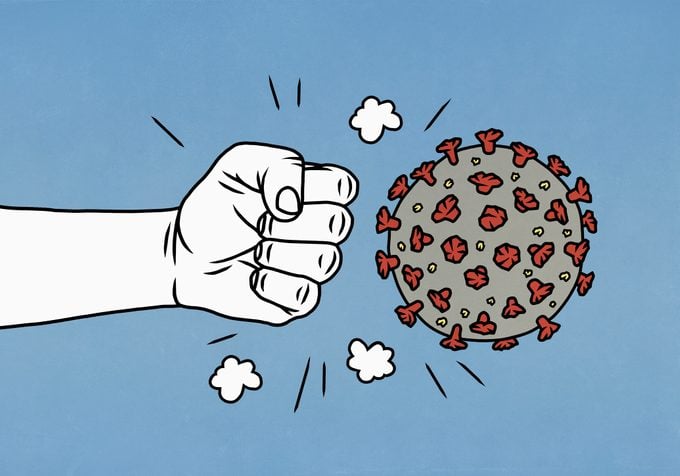
Coronaviruses and Covid-19
There are lots of coronaviruses out there, but these days when you say “the coronavirus” you’re most likely referring to SARS-CoV-2, the virus that causes Covid-19.
The word corona means “crown”
Coronaviruses are named for their spiky or crown-like shape and are a very common type of virus and most don’t cause disease, Havril says. There are three big exceptions though: the 2002 SARS, 2012 MERS, and 2019 Covid viruses are all coronaviruses that have caused significant disease and death. The three coronavirus-caused diseases have things in common—and one important difference.
Covid-19 isn’t a super deadly plague
People hear the word “pandemic” and automatically think mass deaths, but more than 80 percent of people who are infected with coronavirus will recover, stresses Len Horovitz, MD, a pulmonary specialist at Lenox Hill Hospital in New York City. “Not every Covid-19 patient has to go to the hospital either,” Dr. Horovitz says. “Most people will get better at home on their own, but you can be in for a long course of illness that lasts several weeks,” he adds. If you have chest pain, shortness of breath, or severe dehydration, do go to the hospital, he says. (Learn about these other health “myths” that are actually true.)
Make getting vitamin D every day a priority
The relationship between Covid-19 and vitamin D isn’t entirely clear but a recent analysis of preliminary research, published in Nutrients, found that having low levels of vitamin D is linked with more severe symptoms; increasing vitamin D levels may provide some protection. The authors concluded that vitamin D supplementation may reduce your risk of getting infected by or dying from both influenza and Covid-19.
Coronaviruses might linger on clothes and masks
The virus can live on clothing, including reusable masks, says microbiologist and author of The Germ Files, Jason Tetro. “Even before the coronavirus outbreak, I’ve recommended it’s good hygiene to have outside clothes and inside clothes,” he says. “If you’re afraid the virus might be on your clothes, put them in the washing machine or set them aside and don’t touch them for a few days. If you’re using a DIY face mask, wash it with hot water that’s at least 149 F—the temperature at which the virus is killed.” (Here are more tips on how to disinfect your reusable mask.)
“Covid toes” are a real thing
While it mainly shows respiratory symptoms, this virus has been found to be capable of attacking everything from top to bottom, including your toes, explains Matthew G. Heinz, MD, a hospitalist and internist at Tucson Medical Center in Arizona. This symptom looks a lot like chilblains, which is redness, swelling, and itching of the toes (or fingers) in cold weather. Unlike chilblains, though, Covid toes are occurring in warmer weather, notes an April 2020 report in the Journal of the American Academy of Dermatology. Covid toes seem to be an early symptom of the virus and may have to do with blood clotting issues, he says.
Loss of taste or smell is an early warning sign
Another bizarre early warning sign of Covid-19 is losing your sense of taste and smell, says Dr. Heinz. For some people with a mild case, this may be the only symptom, and is more likely to appear in younger people, he says. It’s not clear what causes these strange symptoms but it may have to do with the fact that the disease causes a profound inflammatory response throughout the body, he adds.
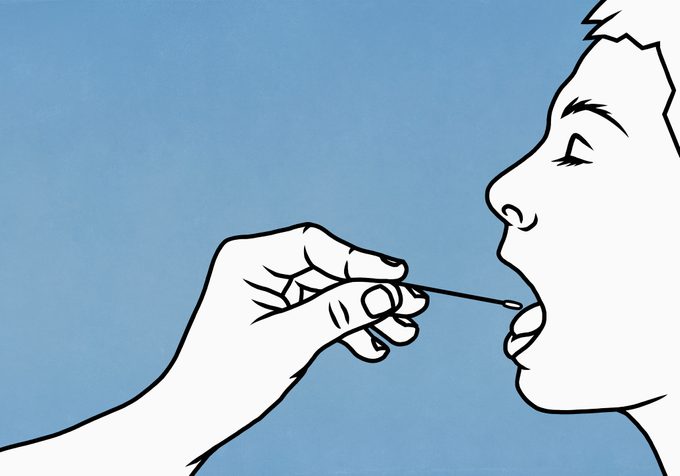
Other viral diseases
Many of the most common illnesses people get are caused by viruses, and these can have some surprising effects.
Herpes simplex virus might cause Alzheimer’s disease
Could that pesky little cold sore be responsible for destroying your memory? It sounds incredible, but research done over the past 20 years suggests there’s a link between the herpes simplex virus (HSV-1) and Alzheimer’s disease. Researchers found that up to 75 percent of elderly people, including Alzheimer’s patients, had HSV-1 in their brains, while people who died of other causes at younger ages had no traces of the virus.
Celiac disease might be caused by a virus
Celiac disease affects an estimated one in 100 people worldwide, reports the Celiac Disease Foundation. New research, published in Science, suggests that the common autoimmune bowel condition may be partly caused by the reovirus. (That’s not a typo. Reoviruses have RNA as their genetic matter, and they affect the respiratory and digestive systems.) The “common but otherwise harmless virus” may trigger the immune response that is thought to cause celiac disease, says Bana Jabri, MD, PhD, director of research at the University of Chicago Celiac Disease Center.
Shingles could raise the risk for stroke and heart attack
A severe case of shingles, a disease caused by the varicella zoster virus (yes, the same one that causes chickenpox), can raise your risk for stroke, heart attack, and death. A meta-analysis of over 20 years of research, published in PLOS One, found that even one case of shingles is associated with a significantly increased risk of both brain and heart events.
Ebola and Zika viruses can be transmitted sexually
You know that protected sex is wise if you want to prevent sexually transmitted viruses like herpes and HIV—especially given that STDs are on the rise. But it turns out many other viruses can be transmitted through semen, vaginal fluids, or both. Recently, researchers discovered that the Zika virus could be transmitted sexually. A separate study found traces of the deadly Ebola virus in the semen of survivors—up to two years after they got sick. Even viruses that aren’t found in semen, like the coronavirus that causes Covid-19, can be passed between partners during sex through saliva and heavy breathing.
Zika virus might kill brain cancer
Not all virus side effects are bad! While the Zika virus can have devastating effects on newborn brains, its ability to target brain tissue may be able to help treat glioblastoma, a common type of brain cancer. The study, published in The Journal of Experimental Medicine, found that the virus specifically targets and kills brain cancer stem cells; scientists may be able to harness that power to kill malignant cells in adult brains.
Your dog can get swine flu
Remember the swine flu we mentioned earlier that might be re-emerging? Caused by the H1N1 virus, it caused a pandemic in 2008. It’s rare for viruses to jump species but this one is special, spreading beyond pigs and humans. H1N1 has been found to infect various farm animals, including pigs and turkeys, and domestic animals such as dogs, cats, and ferrets, according to the American Veterinary Medical Association. Where would your dog catch the virus? Most likely from you, so practice good hygiene around your pets too, they say.
Rabies is the most deadly virus
Nearly 100 percent of people who get infected with the rabies virus will die from it, making it the most lethal known virus. To date, only 14 people have survived the disease after showing symptoms. Fortunately, thanks to the rabies vaccine, the disease is also nearly 100 percent preventable, according to the CDC. If you get the vaccine before, it can prevent an infection, but it also works if you get the shots soon after being exposed. As most cases happen from being bitten by an infected animal, it’s important to see your doctor after any animal bite, no matter how small, they say.
If you can’t touch your chin to your chest, call your doc
This simple exercise is one most children and adults can do relatively easily and it’s a good one to know as a stiff, sore neck is one of the first signs of viral meningitis. This serious illness can be caused in response to exposure to many common viruses, including those that cause herpes, influenza, measles, and enteroviruses, according to the CDC. These viruses are usually spread through saliva, which is why you shouldn’t let anyone kiss your infant. So if you have cold or flu-like symptoms that progress to a severe headache, light sensitivity, lethargy, and your neck is so stiff you can’t easily bend it forward, call your doc stat.
A cancer virus could tell you where your ancestors are from
The human T-lymphotropic virus (HTLV) is known to cause some types of cancers, like leukemia, but most people who carry it won’t get sick. It does, however, have an interesting side effect, helping researchers track patterns in human migration, according to a study published in Frontiers in Microbiology. Because it co-evolved with humans over the centuries, scientists can track the various strains in modern populations which allows them to trace where their ancestors migrated from.
You probably didn’t get “the kissing disease” through kissing
Mononucleosis, caused by the Epstein-Barr virus, is often called the “kissing disease”—which makes it sound like a lot more fun than it is. While it’s true that mono can be spread through kissing, the reality is that it spreads easily through all bodily fluids, including saliva, blood, and semen. So it’s far more likely you picked it up the same way you get the flu, through coughs, sneezes or sharing a cup with an infected person, says Kim Alt, MD, a pediatric specialist at Rockford Pediatrics in Rockford, Michigan.
You can get rid of a virus with duct tape
Warts aren’t caused by cuddling with toads—they are from an infection of the human papillomavirus. The unsightly bumps are usually benign and will go away eventually on their own but that’s cold comfort to the millions of people dealing with them on a daily basis. One home remedy that may speed up the healing time is covering them with duct tape, according to a study published in Jama Pediatrics. In fact, they found that duct tape therapy was significantly more effective than cryotherapy for the treatment of common warts. (And it hurts less!) Here’s how to remove plantar warts with duct tape.
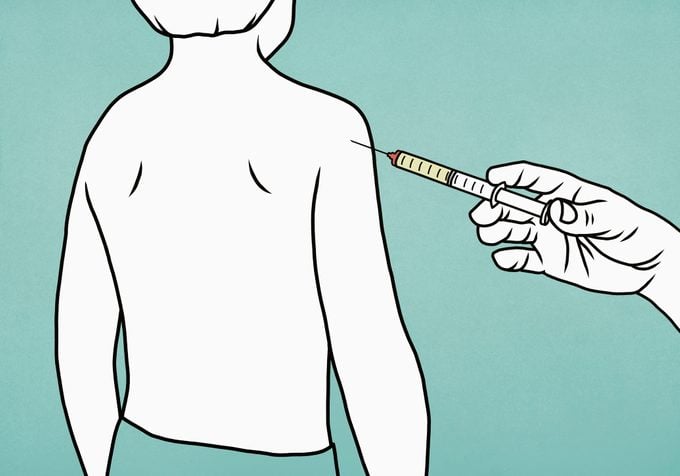
Prevention
To keep from getting sick from a virus, there are a few reliable steps. Neutralize them with soap and water or best of all, get vaccinated against the ones you can. There are a few other things you can do. Read on.
There is no “cure” for the flu and other viruses
Sad, but true—there’s no cure or treatment that will end the flu. “The best ‘treatment’ is prevention through vaccines and lifestyle changes,” says Kathleen Dass, MD, an allergist and immunologist with Michigan Allergy, Asthma & Immunology Center in Oak Park, Michigan. Most viral infections need to run their course. However, antiviral medications, such as oseltamivir [Tamiflu], can help you feel better faster and they can make your symptoms less severe,” she says. (Learn how you can prepare yourself for the worst flu month each year.)
Don’t ask for antibiotics for your viral infection
Antibiotics kill bacteria and they don’t work at all on viruses. Still, many doctors report feeling pressured to prescribe them when patients insist on getting them despite having a viral infection, like the flu, according to a study published in the Journal of the Royal Society of Medicine. In fact, the researchers found that so many people are convinced that antibiotics will help their viral symptoms that up to one-third of all antibiotic prescriptions are unnecessary.
Yes, you should wear a mask
Masks or face coverings mainly protect others from your respiratory droplets, not the other way around. The Centers for Disease Control and Prevention (CDC) recently urged all Americans to cover their faces with cloth face coverings such as scarves and homemade masks when in public to help prevent the spread of Covid-19 but they can help lower the spread of other viruses as well. You should especially be vigilant about wearing a mask if you do have any symptoms like a cough, as the masks work best to protect others from your respiratory droplets. Wearing a mask doesn’t do much to prevent you from getting sick but if everyone would wear them in public places we could significantly cut the rate of infections and community spread, says Dr. Horovitz. (Here are expert tips on how to make your own mask.)
You can get some viruses more than once
Think that just because you had the chickenpox or hand, foot, and mouth disease that you can’t get it again? There’s a popular myth that once you’ve had a virus you’re immune to it but that’s not always the case, Dr. Dass says. When you get a virus your body builds up antibodies to fight it, and those antibodies stay in your system, helping you fight off future infections. (This is also how vaccines work.) However, not everyone makes enough antibodies, and antibodies can wear off over time, which is why you need booster shots of some vaccines, she explains. In addition, viruses can mutate slightly making your antibodies ineffective against the new strain.
Beware of sneaky viruses on gas pump handles
While you might think to disinfect doorknobs and light switches at home, how often do you think about the less-common but still highly touched things outside of your home? Viruses can live up to 72 hours on many high-touch surfaces in public spaces, including sneaky places you don’t think about much, Tetro says. Public restrooms are obvious but viruses also love to hide on things like ATM keypads, gas pump handles, escalator handrails, weights at the gym, and serving utensils at buffets.
Soap and water really is the best defense
Practicing good hand hygiene is so often recommended that it’s practically become a mantra these days. And that starts with washing your hands with soap and water. Here’s how it kills viruses: A drop of soap diluted in water literally pries apart the virus, causing the protein-wrapped articles to rupture and become useless. Make sure to wash for a minimum of 20 seconds and dry your hands on a clean towel.
Antibacterial wipes hurt more than they help
Just like antibiotics don’t cure viral infections, antibacterial cleaners are ineffective against viruses, the CDC cautions. Worse, using antibacterial products can build antibiotic resistance. So when choosing cleaning products, like wipes or sprays, to disinfect items that may be contaminated with Covid-19 or other viruses, it’s very important to choose an EPA-registered disinfectant product. The CDC recommends daily disinfecting of “high touch” surfaces including tables, doorknobs, light switches, countertops, handles, desks, phones, keyboards, toilets, faucets, and sinks.
Don’t forget to change your toothbrush
Yep, your toothbrush is now harboring viruses. Like other hard surfaces, the flu virus can live on a toothbrush (the bristles or the handle) for 24 hours, according to a study published in Nursing Research and Practice. The American Dental Association recommends using a UV lightbox for disinfecting, or you can put your toothbrush in an antiseptic mouthwash and leave it for several minutes. Or you can just buy a new one: Toothbrushes should be replaced about every three months.
Exercise can help you ward off the flu
Don’t cancel that workout: “Regular exercise, which can include taking brisk walks, has been shown to improve your immune system, thus decrease your likelihood of developing a cold or flu,” Dr. Dass says. But don’t overdo it. “If you’re training for a long marathon, that can have the opposite effect and hurt your immune system,” she says.
Get a flu shot every year
One of the best ways to prevent the flu is to get a flu shot every single year. There are over 200 strains of flu viruses and they can mutate, which is why a new flu shot formula is created every season, says Jeremy Blais, a pharmacist in Providence, Rhode Island, and director at CVS Health. And contrary to popular belief, getting one strain of flu doesn’t protect you from getting the others. So even if the flu shot isn’t a perfect match, it’s still worth getting as it will offer some level of protection and it’s better than nothing, he adds.
The flu shot will not give you the flu
A very common reason people give for not getting their yearly flu vaccine is that they, or someone they know, have gotten the flu from the shot. “This is a myth. The viruses in the flu shot are killed so it’s not possible to get the flu from a flu shot,” Blais says. He says you may experience some minor side effects including soreness, redness, or swelling where the shot was given, a low-grade fever, body aches, or both, but these are not the same as getting the flu. “These side effects begin soon after the shot and usually last one to two days. Almost all people who receive the influenza vaccine have no serious problems as a result of receiving it,” he says.
Some children need two flu vaccines
The CDC says children between six months and eight years of age may need two flu vaccines in one flu season. If the child is getting a flu vaccine for the first time, the CDC recommends they get two shots, spaced at least four weeks apart, to help build their strongest immunity possible. Talk with your child’s doctor about the number of flu vaccines they need. Check out these non-medical ways to build your child’s immune system.
Avoid the sun if you are prone to cold sores
Once you’ve had an episode of herpes infection, the virus lies dormant in nerve cells in your skin and may re-emerge as another cold sore in the same place as before, according to the U.S. National Library of Medicine. Recurrence often is triggered by sun exposure. This means time spent outdoors, such as going to the beach, may cause new sores to pop up.
Drink green tea
According to a meta-analysis published in Molecules, green tea may be an immune booster, helping fight both cold and influenza viruses. Researchers found that not only does drinking tea on a regular basis help you recover from a cold but may also make you less likely to get one in the first place and could help prevent recurring or new infections.
If you have an egg allergy, you can still get the flu shot
Numerous studies have analyzed this danger and they consistently show that the concern is overblown, Dr. Dass says. “In fact, in the CDC’s most up-to-date guidelines, they recommend receiving the influenza vaccine no matter what a patient’s reaction to eggs is.” She adds that if you’re still hesitant because of an egg allergy, there are two egg-free vaccines available—Flucelvax and Flublok.
You can’t count on herd immunity
You may have heard that you can skip getting vaccinated if you live in a place where most people have had the disease or the shot, allowing you to take advantage of “herd immunity.” “Herd immunity occurs when enough people are vaccinated that a virus has little opportunity to spread. Effective herd immunity requires that more than 90 percent of the population be vaccinated against a disease,” says Tish Davidson, medical writer and author of Vaccines: History, Science, and Issues and The Vaccine Debate. “The exact percentage depends on the contagiousness of the disease and the flu is very contagious. With the current low flu vaccination rate, people should not count on herd immunity to protect them. It won’t.”
(Here’s everything you need to know about Covid-19 herd immunity.)
Vaccinating kids early works
Who gets flu shots in the United States? Older people, of course—they’ve been the focus of flu vaccine campaigns since the 1960s. But an important way to increase their protection, ironically, is to vaccinate their children and grandchildren. The reason: An older person‘s immune system doesn’t respond efficiently to the flu vaccine, so it’s only partially protective, according to the CDC. The same vaccine creates a much stronger immunity in the young. What’s more, as we’ve learned with Covid-19, kids are more likely than others to become silent carriers.












